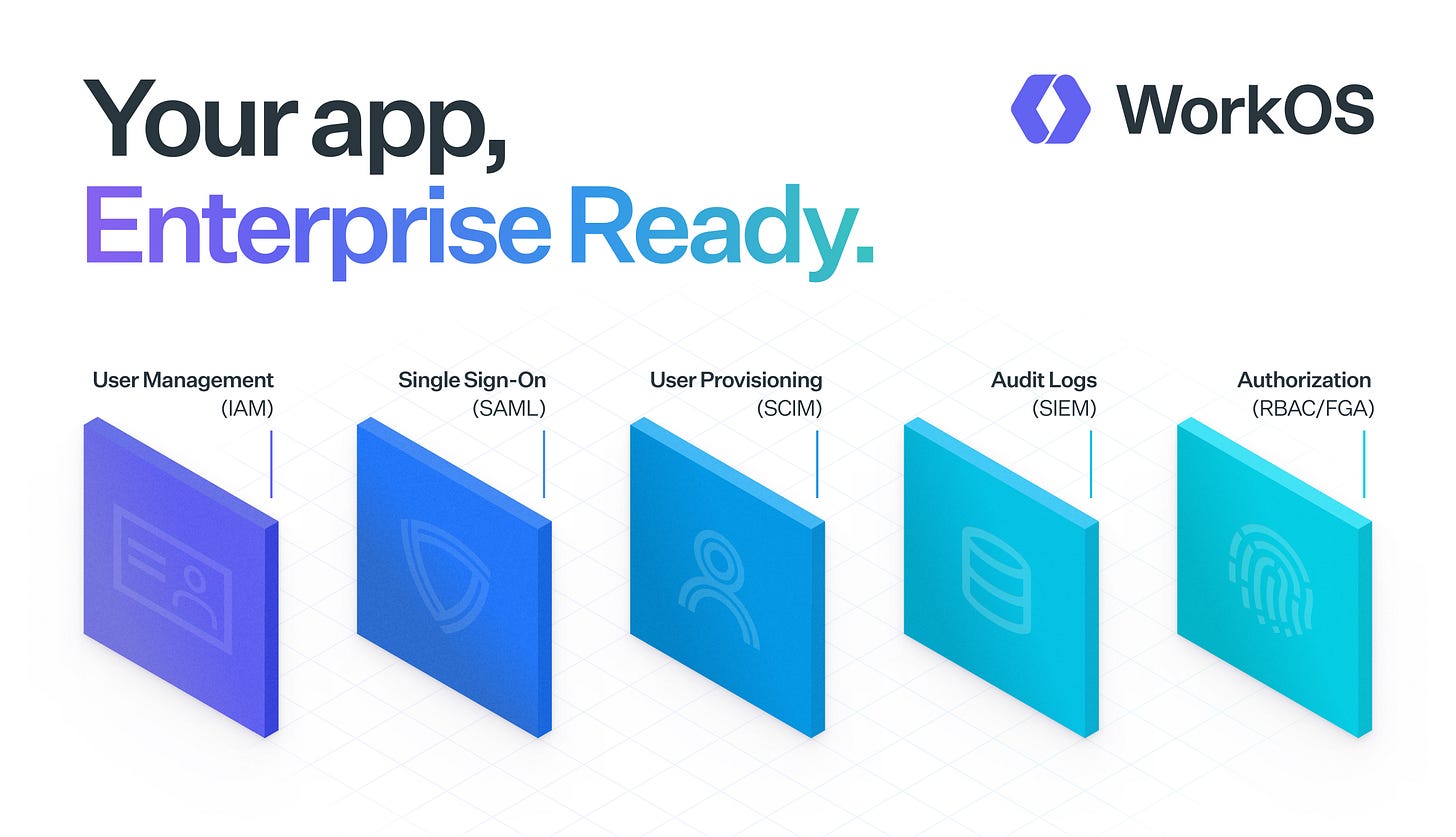🖥️ WorkOS
I am happy this week to promote WorkOS, which powers some of the fastest-growing companies in the world, like Perplexity, Vercel, Webflow, and more!
WorkOS allows you to start selling to enterprises with just a few lines of code, thanks to:
👤 Complete user mgmt solution — along with SSO, Directory Sync (SCIM), and Fine-Grained Authorization (FGA).
🔌 Modular and easy-to-use APIs — that enable integrations to be completed in minutes, not months.
📑 High-quality docs — and seamless onboarding for your users, eliminating unnecessary complexity for your engineers.
✨ Free user mgmt — up to 1 million MAUs.
Back to this week’s ideas!
1) 🔺 The Iron Triangle of Planning
Consider the Iron Triangle of Planning, proposed by Martin Barnes in 1969.
It is based on the assumption that Scope = Time * Resources — so, supposedly, you can change one dimension to impact the others.
However, trading between these constraints is not always possible.
In my experience, resources (or budget) do not often have an immediate impact on the other two.
In fact, you can't usually say "I want to pay twice as much so you can deliver the app in half of the time", because:
Some work is strictly sequential and can’t be made parallel — 9 women cannot make a baby in 1 month
Resources are not responsive — new people on the project need onboarding, coordination, etc.
To deliver a project faster, your best bet is to act on one of the two other dimensions: 1) reducing the scope, or 2) increasing the time for delivery.
2) 🙅♂️ Set a mission people can disagree with
A few weeks ago I wrote a full piece about creating good visions and missions for your team.
The takeaway I care about the most is that good missions are practical. They guide decisions. And the best way to figure out if a statement is practical enough is by asking yourself if anybody could disagree with it.
Could they disagree with the direction, scope, or strategy?
Along these lines, here are a bunch of questions you may ask around, and to yourself:
Can you disagree with your vision or mission?
Can you mention something that does not belong to your vision or mission?
Do you actually achieve (or get close) to the vision by accomplishing the mission?
Can you imagine team members making decisions because of your mission? What decisions?
Can you imagine people being inspired to work for your company because of your vision & mission?
Can you name a close competitor of yours that doesn’t fit your vision & mission?
Don’t limit these to yourself. Go to people both inside and outside your company and tell them the whole story, top down: vision, mission & strategy. See how they react: do they understand it? Are they excited by it? Do they have more questions?
You can find the full guide below 👇
3) ❓ Find the question behind the question
A few months ago I interviewed Wes Kao, and we talked a lot about managing up.
Many people are confused by this because they believe it’s their manager’s job to manage them, not the other way around.
Managing up, though, is not really about managing — it is about good communication — and it boils down to two things:
👑 Acting like an owner
🏋️♀️ Reducing cognitive load for your manager
You should be proactive and provide the kind of updates that match what your manager cares about.
A good way of managing up is figuring out the question behind the question. If your manager keeps asking questions about something, chances are your answers are not satisfactory, and there is a question behind a question.
E.g. if the question is “how’s the project going?” an answer like “going great” is probably not going to cut it. What’s the real concern here? Address it by providing evidence and data points.
So, managing up creates a virtuous cycle of benefits:
🔍 Visibility — it increases visibility into your work, making your contribution evident.
🎖️ Trust — visible progress that is aligned with your manager’s goals creates trust.
🏃♂️ Autonomy — more trust allows you to get more autonomy.
🏆 Impact — more autonomy allows you to go after bigger things and have higher impact.
I collected the best insights from our first batch of podcast guests in this previous article 👇 it’s a great way to catch up with the episodes if you don’t have the time to watch them in full.
And that’s it for today! If you are finding this newsletter valuable, consider doing any of these:
1) 🔒 Subscribe to the full version — if you aren’t already, consider becoming a paid subscriber. 1500+ engineers and managers have joined already! Learn more about the benefits of the paid plan here.
2) 🍻 Read with your friends — Refactoring lives thanks to word of mouth. Share the article with your with someone who would like it, and get a free membership through the new referral program.
I wish you a great week! ☀️
Luca





